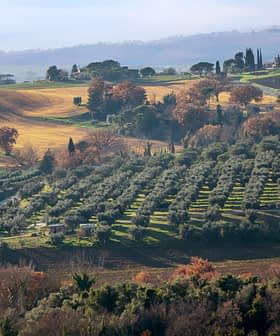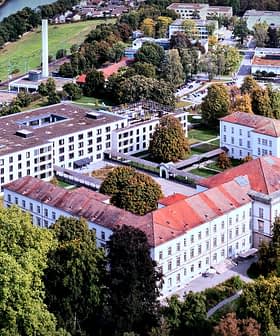Officials in Puglia Approve New Plan to Stem Spread of Xylella Fastidiosa
The goal is to monitor and combat the bacteria outbreaks that have been destroying traditional and monumental olive groves for nearly a decade.
 Puglia, Italy
Puglia, ItalyThe regional government of Puglia has approved a new plan for 2022 to combat the spread of Xylella fastidiosa, focusing on increased monitoring and prevention measures, which has led to the identification of areas where olive farming activities can resume. The plan includes compensation for farmers, aerial monitoring operations, and partnerships with organizations like Unaprol to protect olive trees and prevent the spread of the deadly pathogen, with a focus on relaunching and protecting the olive economy in the region.
The regional government of Puglia has approved its new 2022 plan to fight the spread of the deadly olive tree pathogen Xylella fastidiosa.
The plan focuses on a significant increase in the monitoring of the disease. More than 300,000 trees covering 34,000 hectares will be examined in the next few months.
All our efforts, investment plans and contributions will be mostly focused on the relaunch and the protection of our olive economy.
Local officials said the constant monitoring of the bacteria coupled with a long list of measures to prevent outbreaks and mitigate infections has already allowed them to identify several areas that can resume normal olive farming activities.
Among these is Canosa, located in northwestern Puglia, one of Italy’s most significant olive oil-producing locations. An outbreak was identified in the comune one year ago. However, regional authorities said the spread of Xylella fastidiosa had been stopped, leading the authorities to declare the area Xylella-free.
See Also:Xylella Arrived in Italy from a Costa Rican Coffee Plant, Researchers SayThe Canosa strategy involved the laboratory examination of almost 10,000 samples in the outbreak area and allowed local officials to confirm that the initial outbreak had been an isolated incident.
Under the new plan, the authorities still consider the Salento region, in the mid-southern part of Puglia, to be infected. The Monopoli, Polignano and Alberobello municipalities also adopted the same protocols, establishing a 2.5‑kilometer buffer area that borders infection red zones.
More information to the farmers and compensation for their preventive works aimed at limiting the opportunities for the Xylella insect vectors to spread the bacteria are also included in the new plan.
As they have in previous years, local officials said that farmers could do a few things to significantly limit the breeding and reproduction of insect vectors of the disease, such as the spittlebug.
“With the incoming spring, we need to reiterate how essential the surface processing operations such as plowing, milling, harrowing and shredding are to stop the younger generations of the insects and, as a consequence, the whole population of the spittlebug,” said Donato Pentassuglia, the regional agricultural secretary.
The local branch of the farming association Coldiretti said public and private entities need to execute these operations on unused farmland, public green areas, roadsides, canals and other surfaces.
However, Savino Muraglia, president of Coldiretti Puglia, said farmers should be reimbursed for their expenses and efforts in curbing the spread of Xylella fastidiosa.
“Just as public bodies benefit from funding for mandatory activities, the agricultural entrepreneurs, even more, are due reimbursements to support phytosanitary prevention practices,” Muraglia said.
The Regional Authority for Forests and Waters and the Carabinieri Forestal division will conduct massive monitoring operations. To that end, satellite imaging, drones and detection dogs will all be used.
The regional plan referred explicitly to projects funded by the national authorities, such as Redox, an effort to build new technological infrastructure for large-scale and constant prevention operations.
Due to aerial survey and hyperspectral sensors mounted on aerial drones, the goal of the Redox project is to identify infected olive trees before they show the symptoms of infection, with monitoring occurring over large areas.
“We are reaching first encouraging results which signal the opportunity of a possible contribution in the curtailing of this disease,” Manuela Matarrese, a researcher at the Aero-spatial Technology District (DTA) in Brindisi, one of the partners of the Redox project, told Olive Oil Times.
“By applying results obtained by previous research and developing the hyperspectral sensor technology, the Redox scientific partners should be able to recognize the health of an olive tree and precisely identify the location of the eventual infection,” she added. “In many cases of infection, just a branch will have to be removed and not the whole tree.”
Among the Redox partners is Unaprol, the olive oil producers’ association. Referring to the new edition of the regional plan, David Granieri, Unaprol president, said, “today we have to protect the Monumental Olive Tree Valley which is a heritage site for the whole country.”
“In this context, the decision of the region to approve grafts on those millenary plants with scions of Xylella-resilient olive cultivars is a relevant step forward,” he added.
In the Monumental Olive Tree Valley, the new plan confirmed an expansion of special monitoring, up to 20 kilometers wide from the southern border of the infected Salento region.
“Our goal is to create barriers and mitigate the spread,” Pentassuglia said.
According to the local officials, the monitoring operations provided for by the regional plan are unprecedented in terms of resources used to stop the spread, coordinated actions throughout Puglia and the new strategies being applied.
“On one side, we have to curtail an extraordinary phenomenon. On the other, we have to sustain the olive sector and protect the beauty of our countryside,” Pentassuglia said. “We need to work with farmers, associations, municipalities, researchers, universities and regional authorities.”
“All our efforts, investment plans and contributions will be mostly focused on the relaunch and the protection of our olive economy, the beating heart of a beloved region, admired by the whole world,” he concluded.









